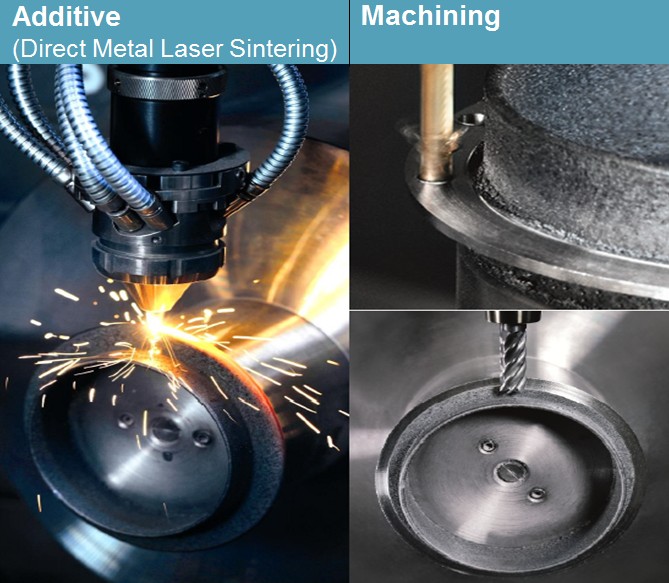Siemens recently posted a Q & A on Hybrid Additive Manufacturing with Andreas Saar, their Vice President of Manufacturing Engineering Solutions of PLM Software. As well as discussing the latest version of the company’s CAD/CAM software, the interview is interesting exploration of the benefits, function and future of hybrid additive manufacturing.
First things first. What is hybrid additive manufacturing? It is the combination of subtractive manufacturing methods and 3D printing to build finished parts in a single environment. The merging of these two manufacturing methods can produce parts with new levels of complexity and multiple setups can be consolidated easily. There are three main classes of parts made through the process of hybrid additive manufacturing: production parts, prototypes, and repairs. The production of parts using 3D printing or hybrid manufacturing methods is a quick, flexible and cost effective option for many companies in many industries. Printing prototypes is a primary application of 3D printing, as it allows for a quick turnaround of ideas and designs and it allows for a broad range of experimentation. Additive manufacturing and hybrid manufacturing also allow companies to refurbish and repair parts. This is particularly useful in the aerospace industry.
Additive manufacturing and hybrid manufacturing allow for much more freedom and creativity for companies. In traditional methods of manufacturing, companies must purchase their materials from specific vendors, but in the new world of 3D printing, companies can actually create their own materials. Not only will companies be competing with their products, but also with the integrity of their materials.
Hybrid manufacturing offers a few key advantages over an additive manufacturing system on its own. Instead of powder bed technology, it uses a powder deposition system which is quicker and more accurate, because it only deposits material where needed. The density of the material ends up being of a higher quality and the process allows for more versatility in terms of multiple or graded powder materials. Another key advantage is that manufacturers can machine the functional surfaces of a component or object until it is finished for final use. Hybrid manufacturing uses multi-axis systems to build part features in any direction, eliminating the need for support structures, which waste time and materials, while adding finishing headaches. Though there are advantages like a larger build volume, hybrid manufacturing does have some limitations, like being unable to create fine graded structures, for example.
Andreas Saar is particularly excited about their own Siemens NX CAD/CAM software, saying, “NX will provide users the tools that allow the design of additive manufacturing parts, and lightweight structures, liberating designers from traditional processes and providing innovation and increased freedom in the process of designing new products. Next, we bring computer-aided engineering (CAE) into additive manufacturing to calculate topology optimization and the impact of heat distribution while building up the product. Users will have CAE tools which are adapted to additive manufacturing and allow layer by layer analysis and adaptation of the process. This is totally new way of utilizing this engineering technology in the build process of a part. Then, into the part manufacturing process, the user works on a feature decomposition model. Subsequently the user can define the additive process parameters for each feature created in that process as well as the subtractive or finishing operation to complete the part. The system semi-automatically combines these features in the proper sequence, and allows alternating between additive and subtractive operation to manufacture the part. This process provides a lot of flexibility and is a completely new technology.”
Aerospace, defense, and any industry that has regular one-off or small series of highly complex parts will do well using hybrid manufacturing, as well as for companies that need to create parts for complex repairs. As we move toward a reality computing/mixed reality future where combinations of technologies will be used in one environment, we can see how these technologies together will reduce the amount of steps it takes to complete ready-to-use parts.





